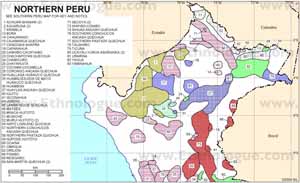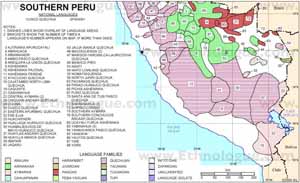The Sign
In the turmoil and panic in the aftermath of a tsunami, it is crucial for the evacuees to know where to evacuate to. It is difficult to effectively direct the evacuees to different locations. While there are still psychological responses and specific logistics to consider, the basic plan is that the evacuees are moved to the predetermined locations (large public parks, universities, and soccer stadiums), which will be evaluated beforehand for structural integrity capable of withstanding a tsunami or are far enough inland that there is no risk of tsunami damage. There will also need to be signs directing the evacuees along the evacuation routes.

The sign has a picture of a wave and a person moving in the direction desired accompanied by an arrow and an image of the specific evacuation point - i.e. Universidad Nacional, Estadio Municipal (stadium), etc. In this way, communication of the desired evacuation route and location will be possible regardless of literacy and language barriers via a simple sign.
Peruvian Languages
The languages used in Peru are the following: Spanish, Quechua, Aymara, and quite a few Amazonian languages. We do not have to worry about the Amazonian languages (for the most part) as those would be spoken further inland.
According to the maps above, the populations living in the coastal regions mainly speak Quechua and Spanish. Therefore, the two languages on the signs for all of Peru will be in those two languages.
What the Signs Will Say
The top of the evacuation route sign will read: "RUTA DE EVACUACIÓN" (Evacuation Route).
The bottom of the sign will read: "EN CASO DE TERREMOTO U OLAS, SIGUE LAS FLECHAS AL CITIO DE SEGURIDAD" (In case of earthquake or wave, follow the arrows to a location of security, literal).
As there will be many evacuation sites, we also strongly recommend to put an insignia/decal/image of the nearest evacuation site so that the people know where their destination is without having just one path laid out in arrows, which will be less efficient for mass movement of people. For a university, we suggest putting a symbol for a school with the name of the school; for a soccer stadium, we suggest a symbol that looks like an arena or stadium, again, with the name of the stadium; etc.
The signs for tsunami-safe zones will read "TSUNAMI: LUGAR DE SEGURIDAD" (Tsunami: location of safety, literal).
The parts in Quechua will read the same, though there is no word for tsunami, and the missionaries that documented the language seem to have neglected to add the word for wave. The word for "water" is yaku, the word for "mountain" is orqo, and the word for "to run" is corriy, so we might be able to make something with that, though the final sign would have to be more specific (source).

